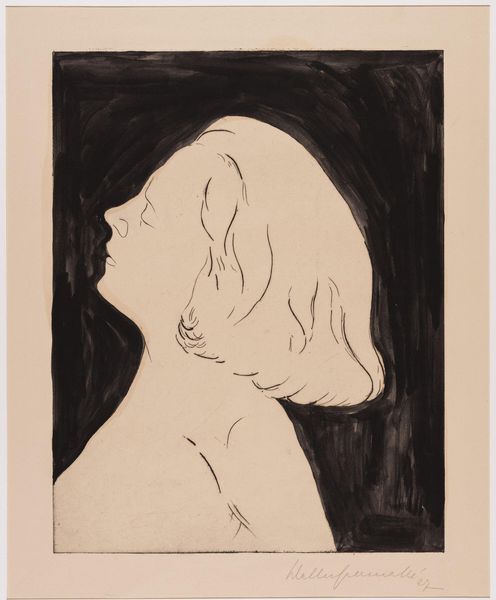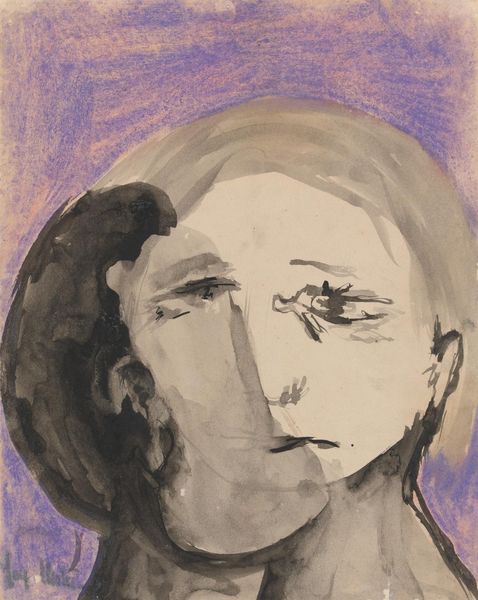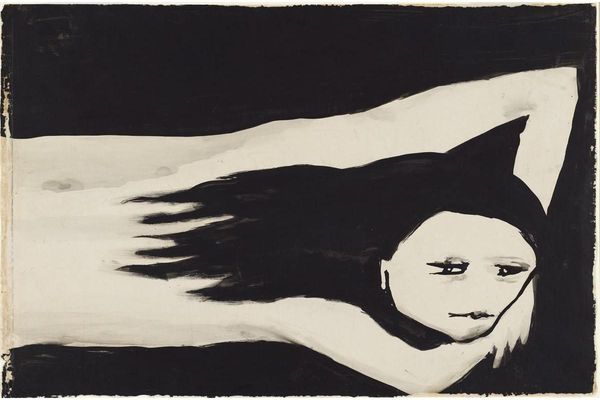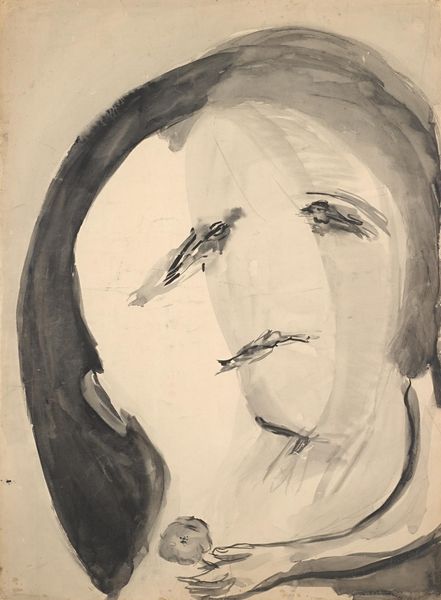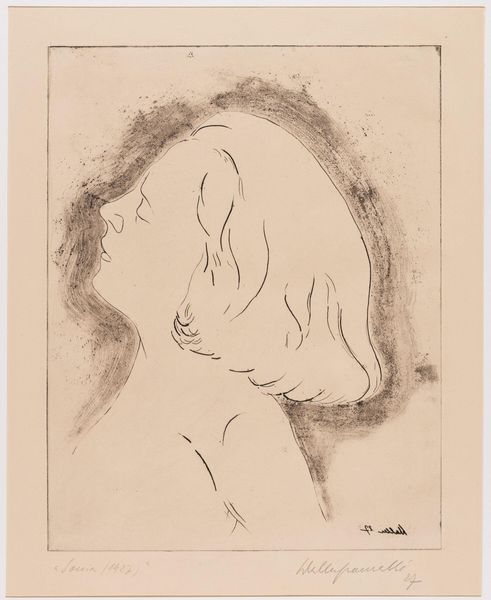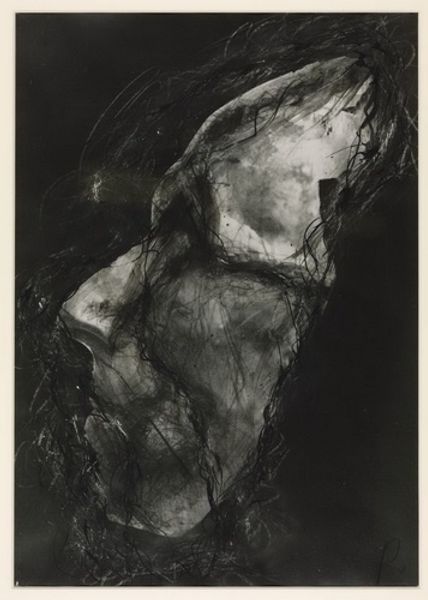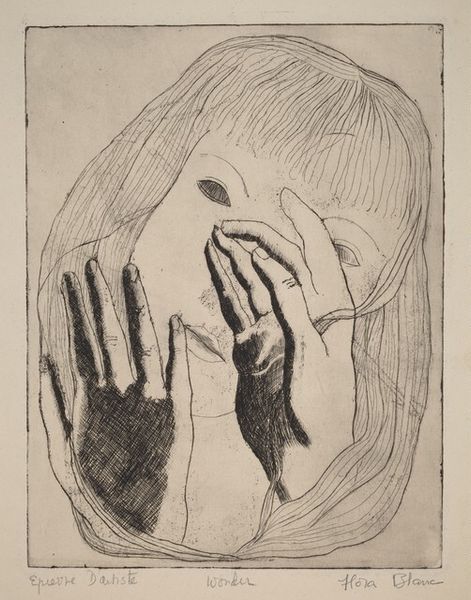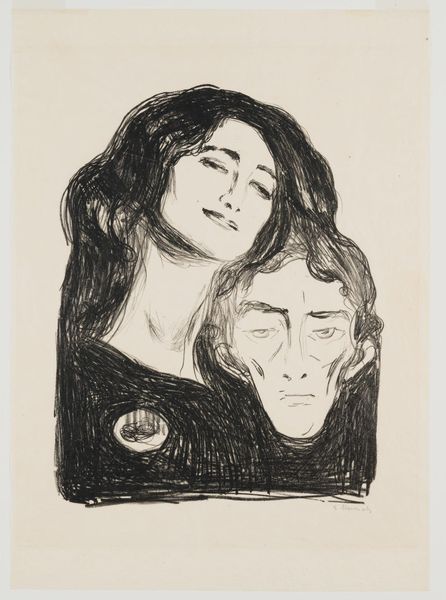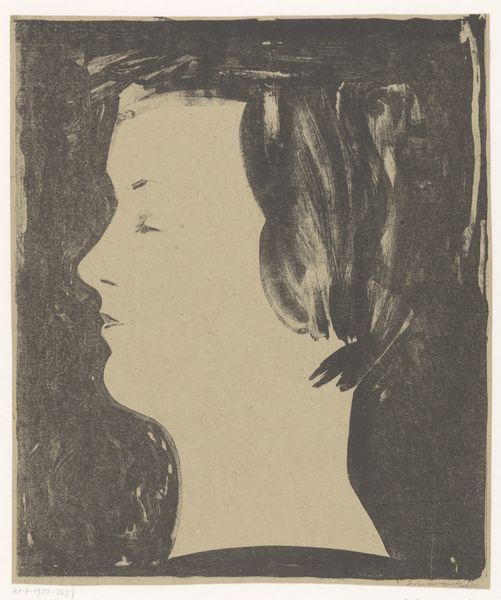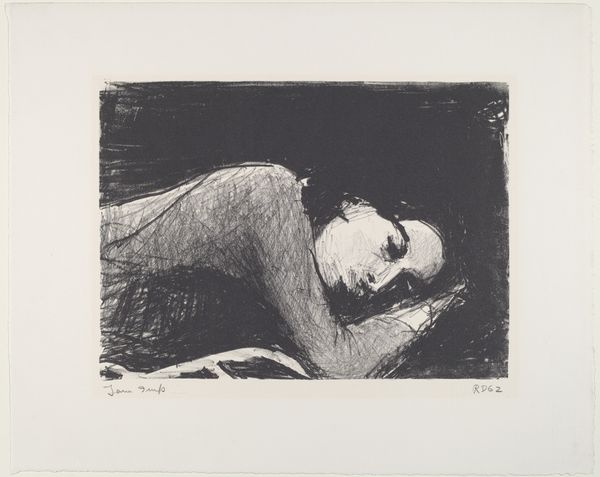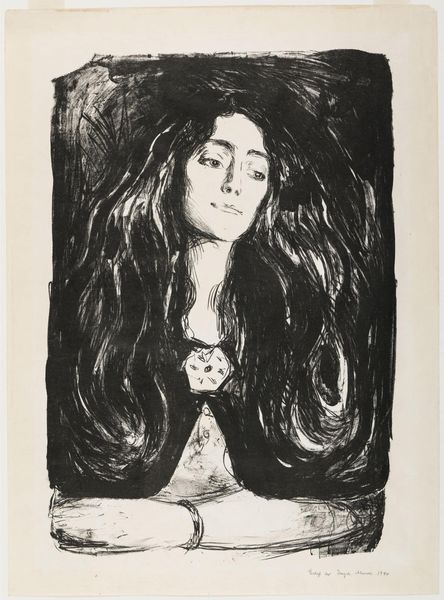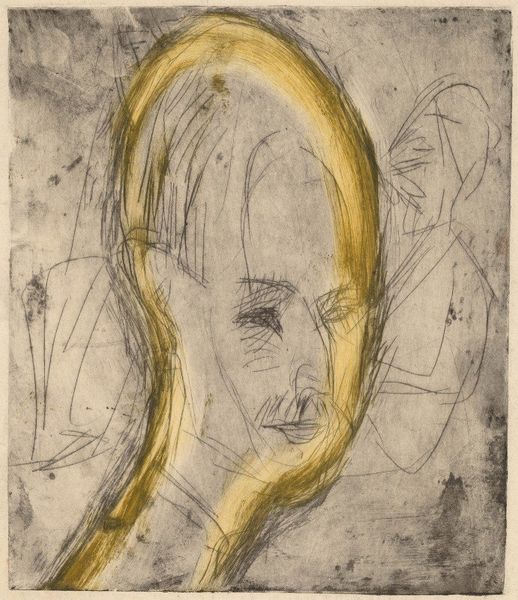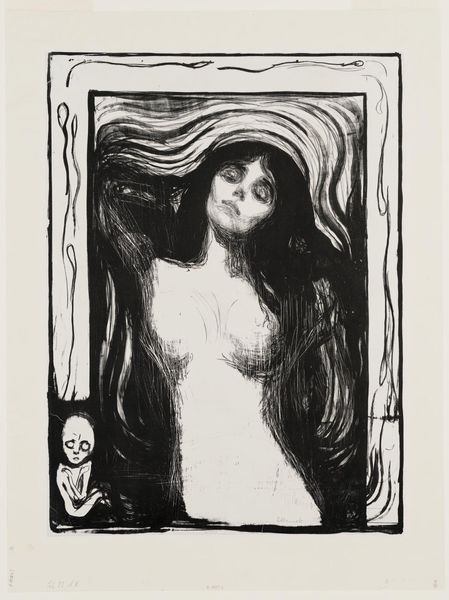
Copyright: Joy Hester,Fair Use
Curator: So, we’re looking at "Lovers II" by Joy Hester, created in 1956. It’s an ink drawing, a striking monochrome portrait of two figures intertwined. Editor: My first thought? It’s a desperate kind of love. Not the fluffy clouds and sunshine kind. The stark contrast feels heavy. Almost suffocating. Curator: It’s definitely intense. The ink wash creates a sense of drama, wouldn't you say? It reminds me of the emotional turbulence Hester was exploring in her life at the time. She really knew how to let rip. Editor: Well, speaking of ink... look at how the density shifts! How economical is this mark-making? You could easily analyze the market availability of materials after WWII for art-making in Australia, or see how the limited material directly shaped her technique. Curator: I do like that! It does seem as though, for Hester, limitations acted like rocket fuel for her expressiveness! She just poured feeling directly onto the page. I see a rawness, like a soul stripped bare. That face tilted upwards--she’s completely exposed. Vulnerable. Editor: True, but what about the looming, darker figure behind? Is that about overbearing power dynamics? We need to question what forces were shaping societal expectations in Australia and especially women in the arts. Curator: Possibly. The male figure *is* rendered so bluntly, just those slits for eyes! Maybe a commentary on the blindness of some of the blokes around her... You get the impression Hester found connection tricky but vital, judging from the recurring lover/obsession theme throughout her practice. Editor: Well, and it’s not just lovers, but always through portraiture. Thinking about her drawings, it challenges the preciousness associated with high art while she's documenting something very palpable within arms reach. Curator: It really does. Her unflinching look—it's why her art grabs me. Looking at it, I’m left wondering: how brave can you be, when expressing yourself so candidly? Editor: Yes, Hester holds up a mirror, but distorts the surface just enough so we recognize how warped reality can become. It’s this tangible approach that moves away from the elite circles and gives us, the viewer, something real to reckon with.
Comments
No comments
Be the first to comment and join the conversation on the ultimate creative platform.
